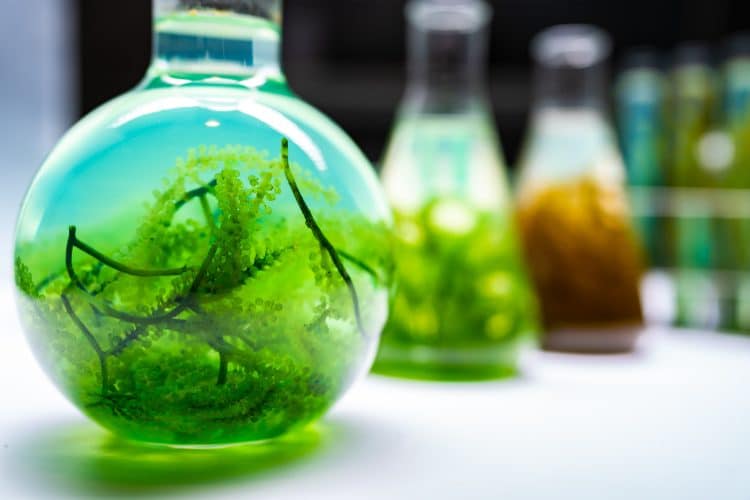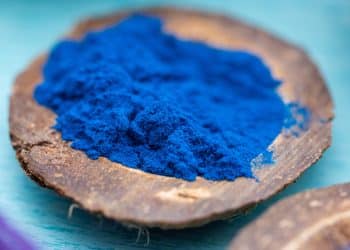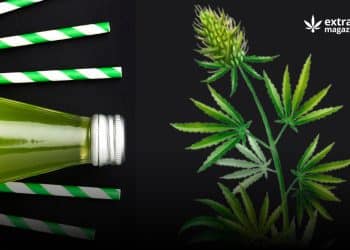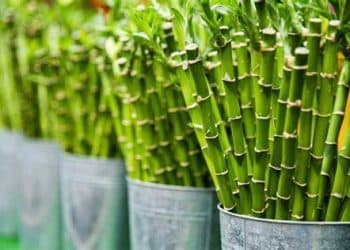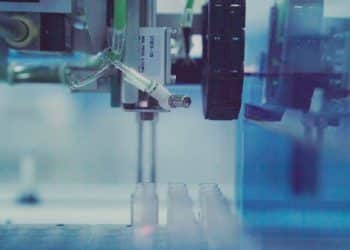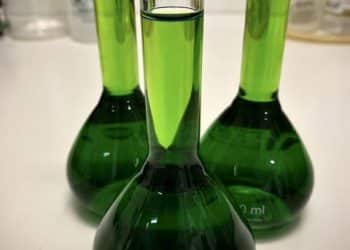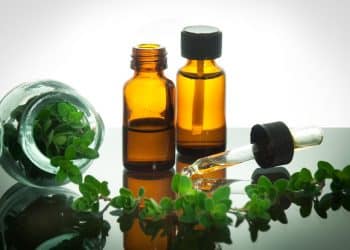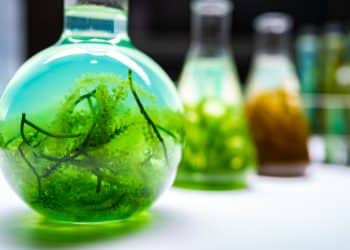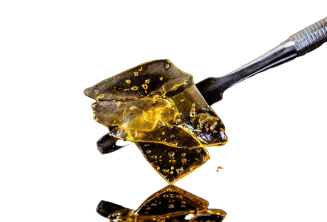Conventional techniques such as Soxhlet, hydrodistillation, and maceration have many applicable disadvantages, including the use of large quantities of harmful solvents, increased time and energy consumption, hazardous environmental effects, and lower quantitative and qualitative yields.
A contemporary search to find effective ecological techniques has shifted focus to green technologies, these include: ultrasound, supercritical fluid, subcritical water, pressurized liquid, enzyme-assisted extractors, microwave, cold plasma-assisted extractors.
Studies have demonstrated the synergistic effects of combining green technologies, including reduced solvent use, significantly shorter extraction times, and improved yields and quality of bioactives from plant materials and by-products. [1]
Green Solvents such as subcritical water, supercritical CO2, bio-based solvents like ethanol and glycerol, and neoteric solvents like ionic liquids and natural deep eutectic solvents (NaDES), offer safer alternatives for bioactive extraction. Recently, combination of these novel green extraction techniques applied simultaneously or sequentially has proved to be beneficial as they provide synergistic advantages on joint application. [2]
Combinations of Green Extraction Techniques
Enzymatic Extraction Technique + Ultrasound (UEAE)
Ultrasound-assisted extraction employs high-frequency sound waves (20–100 kHz) to produce cavitations bubbles in extraction solvent. Upon collapse, these bubbles generate shock waves which break the cell walls of the plant material and facilitate the release of bio-active compounds present in them. Enzymatic extraction, enhanced by ultrasonic treatments, maximize mass transfer and extraction efficiency by disrupting cell matrices and boosting enzyme action, leading to the rupture of the cell matrices via cavitational bubbles, thereby increasing the exposure of target compounds for enzyme action. This synergistic approach effectively reduces extraction time and costs. [3]
Compared to traditional extraction methods, the UAEE achieves higher extraction yields and extracts with greater antioxidant activity, especially from agricultural by–products including mango peel and tomato waste. Lab-scale work has been conducted to yield higher amounts of bioactive compounds while reducing extraction time and cost together with recognizing the possible enhancement of antioxidant activity by integrating ultrasound and enzyme treatments. [4]
Microwave-assisted enzymatic extraction (MAEE) is a process capable of quickly destroying cell membranes to expose enzymes to the highest possible surface area, producing both higher yields of the total polyphenol contents. MAEE has similar effectiveness to microwave-assisted extraction (MAE) and comes with environmental advantages such as less use of hazardous solvents and reduced extraction time, however it could be costly. [5]
Ultrasound + Supercritical Fluid Extraction Technique (USFE)
The application of ultrasound can serve as a pretreatment or occur as a simultaneous step of supercritical fluid extraction (SFE). SFE exploits temperatures and pressures at which CO2 changes from a gas to a fluid, similar to a liquid that can pass through the matrix and extract the lipophilic components of interest. Stopping the application of supercritical conditions leads to vaporization of carbon dioxide without leaving any solvent residue in the extract. Combining ultrasound with SFE (USFE) improves efficiency by breaking down membranes and/or plant walls and also reducing extraction times. [6]
Enzymatic Extraction Technique + SFE (ESFE)
ESFE, which combines an enzymatic treatment step with traditional solvent extraction and supercritical fluid extraction (SFE) processes, has higher polyphenol concentrations and improved extraction from other sources including black tea residues. [7]
The synergy between the two methods increased flavonoid and phenolic compound yields from Medicago sativa L. leaves, suggesting its potential as a green extraction technology. [8] However, further research is needed to optimize ESFE protocols for broader efficiency.
Ultrasound + Microwave-Assisted Extraction Technique (UMAE)
The simultaneous, sequential or cyclic use of microwaves and ultrasound improves extraction thanks to the synergistic action between the cavitation bubbles generated by the ultrasound and the internal heating generated by the high energy microwaves. Furthermore, the mix of these innovative techniques accelerates the plasmolysis process, the movements of the molecules, the penetration of the solvent, and the increase in the surface contact area between the solvent and the matrix leads to improving the yield in extraction of bioactives. [2]
In case of simultaneous exposure, an ultrasonic probe is fixed at a microwave reactor while a sequential system passes the samples through microwave firstly, then ultrasound, also cyclically. [9] [10]
Ultrasound + Cold Plasma-Assisted Extraction (UCPAE)
Cold Plasma Treatment involves the use of plasma gas generation: a partially or totally ionized gas characterized by a balance between negative and positive charges (e.g. electrons, ions, radicals with zero net charge) is obtained through treatments with ionizing radiation, or through electrical discharges or through heating. High voltage applied to a gas (air, argon, or helium) creates plasma without high temperatures, ideal for heat-sensitive compounds. The result is the damage of compounds from the cell surface and the formation of superficial lesions improving the permeability of cell membranes to solvents. [11]
Ultrasound + Subcritical Water Extraction Technique (USWE)
Subcritical water extraction is applied with water at temperatures between 100°C and 374°C and pressures sufficient to maintain it in a liquid state. Something special happens as the temperature increases: water becomes less polar, allowing it to dissolve a wider range of organic compounds, similar to organic solvents such as methanol and ethanol.
Ultrasound-assisted subcritical water extraction (USWE) combines the principles of ultrasound (UAE) and subcritical water extraction (SWE). SWE utilizes water at specific pressure and temperature to extract various compounds. [12]
Combining SWE with UAE has shown promise in enhancing polyphenol yields, surpassing conventional methods and highlighting the potential of green solvent extractions. In one study, authors combined subcritical water extraction with ultrasound (USWE) which increased the yield of polyphenols from Tartary buckwheat (Fagopyrum tataricum L.) (31.8 mg/g) when compared to UAE (19.3 mg/g) and conventional extraction (4.2 mg/g). However, SWE (53.3 mg/g) had a higher TPC than USWE. Indeed, optimization of USWE conditions is essential for maximizing phenolic yields, with identified compounds including sinapic acid, gallic acid, epicatechin, and various flavonoids and anthocyanins. [13]
Microwave + Subcritical Water Extraction Technique (MSWE)
Microwave-assisted subcritical water extraction (MSWE) it’s a way to extract different things like proteins, polysaccharides, arabinoxylans, and phenols, exploiting the combined benefits of microwaves and subcritical water.
Researchers optimized MSWE conditions to extract Rebaudioside A (Reb A) and Stevioside (Stv) from Stevia rebaudiana L. leaf using MSWE at certain condition (140 ◦C, at 1 min, 2.6 bar), and subcritical water. It was observed that yield was similar in both MSWE and conventional ethanol extraction (70% ethanol, 45 min) i.e., Reb A (9.7%; 9.9%) and Stv (4.3%; 4.3%), respectively. The authors concluded that MSWE significantly reduced the extraction time making it cost effective and suitable for application in the sweetener industry. [14]
SFE + Subcritical Water Extraction Technique (SFESWE)
Supercritical fluid extraction (SFE) in combination with subcritical water extraction (SWE) significantly increases extraction efficiency. SFE exploits the distinctive characteristics of supercritical fluids to reduce time, cost, environmental impact and the absence of residues in extracts, while SWE modifies the polarity of water to favor the solubilization of less polar compounds in it. SFESWE therefore maximizes the extraction of different compounds by manipulating the operating parameters achieving high yields in a single process. [15]
SFE + Pressurised Liquid Extraction (SFEPLE)
This combination of techniques was provided by researchers who suggest that SFE-CO2 alone is unable to extract all biomolecules, highlighting the need for subsequent PLE to achieve a more complete extraction. Indeed, they found that the SFEPLE combination was perfectly suited to fully extract bioactive compounds from the fruits and pomace of Viburnum opulus L. Initially, SFE-CO2 produced a total phenolic content (TPC) of 40.1 mg GAE/g. However, further extraction using PLE with water, acetone and ethanol increased the TPC to 174.9 mg GAE/g. [16]
In conclusion, the combination of environmentally friendly techniques saves time and increases the quality of extraction. Vacuum mixing with ultrasound/enzymes improves the extraction of proteins, phenols and antioxidants from plants, while the combination of ultrasound, subcritical water and microwave promotes the extraction of bioactive compounds from plants, improving efficiency and yield. [2]
Green/Smart Solvents
Supercritical fluids, like CO2, merge liquid and gas traits, enhancing extraction efficiency while reducing toxic solvent use in various applications.
- Subcritical water (SbCW): the SbCW state is at high temperature and high pressures to maintain the liquid state of water. Temperature positively affects yields but can degrade sensitive compounds. Optimal SbCW conditions vary for different compounds. Studies demonstrate the effectiveness of SbCW in extracting phenols, flavonoids and antioxidants from various sources. [2]
- Supercritical CO2 (SCCO): a versatile green solvent widely used for the extraction of bioactive substances. It guarantees extraction without altering the structure or function of the bioactives, the extract is free from solvent residues. [2]
Bio-based solvents derived from biomass sources like agro-waste residues, algae, and industrial by-products:
- Ethanol derived from lignocellulosic agricultural residues is a very ecological choice as it is produced by the fermentation of industrial waste. Flammable but non-toxic, it readily solubilizes polar compounds and its superior safety profile makes it preferable to methanol and propanol. One study showed the efficiency in extracting bioactive substances from natural sources, such as zein from corn: highest in ethanol (80.8%), followed by isopropanol (70%). [17]
- Glycerol, a biodiesel by-product, is renewable, non-combustible, and biodegradable. Despite its high viscosity, its compatibility with water and organic solvents makes it an excellent green solvent. The versatility of glycerol facilitates the extraction of antioxidants and bioactives.
- Limonene, a fruit-derived monoterpenoid, is also produced by some microorganisms such as bacteria and fungi in industrial bioreactors. Limonene as a solvent can adhere strongly to soil particles, but volatilizes easily. It is safer than conventional solvents such as n-hexane and effective in extracting compounds such as terpenes and fatty acids.. [2]
Neoteric solvents are modern solvent systems:
- Ionic liquids (ILs) are organic salts with low melting points and vapor pressures. Comprising organic cations and inorganic or organic anions, they offer diverse polarities and electrochemical characteristics. ILs are high-temperature stable, non-flammable, and have high solubilizing power. Combining ILs with techniques like ultrasonic-assisted extraction (UAE) enhances extraction efficiency and reduces extraction time, making them promising for green extraction methods. [18]
- Deep eutectic solvent (DES) and natural deep eutectic solvents (NADES) are formed by mixing two or more solid organic compounds, resulting in a eutectic solvent with a lower melting point than its individual components. DES are cost-effective, environmentally friendly, and easy to produce. They show high extraction abilities, especially when combined with techniques like MAE and UAE. Similarly, NADES, derived from renewable sources and plant metabolites, exhibit high solubilizing power and extraction efficiency for bioactives. Combining DES and NADES with extraction techniques enhances their performance, making them promising green solvents for various applications. [2]
In summary, the extraction of bioactive components is moving towards prospects of waste recovery and the reduction of pollutants. The extraction process, influenced by both the technique and the solvent, is fundamental to obtaining efficient results. Green techniques offer sustainable solutions, which require further research, commercialization and cost reduction for widespread implementation as they also facilitate respect for the environment by using green solvents.
References:
- C. Picot-Allain, M.F. Mahomoodally, G. Ak, G. Zengin, Conventional versus green extraction techniques – A comparative perspective, Current Opinion in Food Science 40, 2021.
- Manoj Kumar, Mrunal Deepak Barbhai, Shriniketan Puranik, Radha, Suman Natta, Marisennayya Senapathy, Sangram Dhumal, Surinder Singh, Sunil Kumar, Vishal P. Deshmukh, T. Anitha, Ravi Pandiselvam, Jose M. Lorenzo, Combination of green extraction techniques and smart solvents for bioactives recovery, TrAC Trends in Analytical Chemistry, 2023.
- L. Wen, Z. Zhang, D.W. Sun, S.P. Sivagnanam, B.K. Tiwari, Combination of emerging technologies for the extraction of bioactive compounds, Crit. Rev. Food Sci. Nutr. 60 (11), 2020.
- A. Amiri-Rigi, S. Abbasi, M.G. Scanlon, Enhanced lycopene extraction from tomato industrial waste using microemulsion technique: optimization of enzymatic and ultrasound pre-treatments, Innovat. Food Sci. Emerg. Technol. 35, 2016.
- S. Chanioti, P. Siamandoura, C. Tzia, Evaluation of extracts prepared from olive oil by-products using microwave-assisted enzymatic extraction: effect of encapsulation on the stability of final products, Waste Biomass Valorization 7 (4), 2016.
- M.C. Wei, Y.C. Yang, Kinetic studies for ultrasound-assisted supercritical carbon dioxide extraction of triterpenic acids from healthy tea ingredient Hedyotis diffusa and Hedyotis corymbosa, Separ. Purif. Technol. 142, 2015.
- M. Mushtaq, B. Sultana, S. Akram, et al., Enzyme-assisted supercritical fluid extraction: an alternative and green technology for non-extractable polyphenols, Anal. Bioanal. Chem. 409, 2017.
- J. Vladi´c, A.R.C. Duarte, S. Radman, S. Simi´c, I. Jerkovi´c, Enzymatic and microwave pretreatments and supercritical CO2 extraction for improving extraction efficiency and quality of Origanum vulgare L. spp. hirtum extracts, Plants 11 (1), 2021.
- A.A. Mahdi, M. Rashed, W. Al-Ansi, M.I. Ahmed, M. Obadi, Q. Jiang, H. Raza, H. Wang, Enhancing bio-recovery of bioactive compounds extracted from Citrus medica L. Var. sarcodactylis: optimization performance of integrated of pulsed-ultrasonic/microwave technique, J. Food Meas. Char. 13 (3), 2019.
- I. Trujillo-Mayol, C. C´espedes-Acu˜na, F.L. Silva, J. Alarc´on-Enos, Improvement of the polyphenol extraction from avocado peel by assisted ultrasound and microwaves, J. Food Process. Eng. 42 (6), 2019.
- G.Y.Y. Faria, M.M. Souza, J.R.M. Oliveira, C.S.B. Costa, M.P. Collares, C. Prentice, Effect of ultrasound-assisted cold plasma pretreatment to obtain sea asparagus extract and its application in Italian salami, Food Res. Int. 137, 2020.
- Z. Chao, Y. Ri-fu, Q. Tai-qiu, Ultrasound-enhanced subcritical water extraction of polysaccharides from Lycium barbarum L, Separ. Purif. Technol. 120, 2013.
- C.S. Dzah, Y. Duan, H. Zhang, D.A. Authur, H. Ma, Ultrasound-, subcritical water-and ultrasound assisted subcritical water-derived Tartary buckwheat polyphenols show superior antioxidant activity and cytotoxicity in human liver carcinoma cells, Food Res. Int. 137, 2020.
- Z. Yang, B. Uhler, T. Lipkie, Microwave-assisted subcritical water extraction of steviol glycosides from Stevia rebaudiana leaves, Natural Product Communications, 2019.
- F.P. Cardenas-Toro, T. Forster-Carneiro, M.A. Rostagno, A.J. Petenate, F. Maugeri Filho, M.A.A. Meireles, Integrated supercritical fluid extraction and subcritical water hydrolysis for the recovery of bioactive compounds from pressed palm fiber, J. Supercrit. Fluids 93, 2014.
- P. Kraujalis, V. Kraujalien˙ e, R. Kazernaviˇci¯ut˙ e, P.R. Venskutonis, Supercritical carbon dioxide and pressurized liquid extraction of valuable ingredients from Viburnum opulus pomace and berries and evaluation of product characteristics, J. Supercrit. Fluids 122, 2017.
- J. Gupta, B.W. Wilson, P.V. Vadlani, Evaluation of green solvents for a sustainable zein extraction from ethanol industry DDGS, Biomass Bioenergy 85, 2016.
- S.A. Chowdhury, R. Vijayaraghavan, D.R. MacFarlane, Distillable ionic liquid extraction of tannins from plant materials, Green Chem. 12 (6), 2010.
